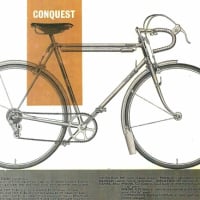We’d like to remind Forumites to please avoid political debate on the Forum.
This is to keep it a safe and useful space for MoneySaving discussions. Threads that are – or become – political in nature may be removed in line with the Forum’s rules. Thank you for your understanding.
📨 Have you signed up to the Forum's new Email Digest yet? Get a selection of trending threads sent straight to your inbox daily, weekly or monthly!
Fitting wheels with larger centre bore
Comments
-
re: "studs are designed only to act in tension":
That's 100% correct. But, the vertical loads are not carried at the point the wheel (almost) touches the hub. The vertical loads are transferred ENTIRELY by friction, i.e. between the wheel and the backplate. My only advice is don't grease you backplate !
The horizontal force from the studs creates the required frictional resistance (at 90 degrees). The bolts can only go into bending mode if this frictional resistance force is exceeded and the bond breaks (e.g. via a large impact). However, if you hit something that hard, your tyre would already be flat and your wheel would probably be in a sad state too. The gap between your wheel and your hub would be pretty academic in these circumstances.
The fact that nuts are tapered means they tend to centre the wheel automatically. I always spin my wheel and tighten incrementally to help with centreing. If your wheel isn't centred properly, you will feel it as soon as you go any any speed.
hope this helps0 -
donvanfleet wrote: »re: "studs are designed only to act in tension":
That's 100% correct. But, the vertical loads are not carried at the point the wheel (almost) touches the hub. The vertical loads are transferred ENTIRELY by friction, i.e. between the wheel and the backplate. [...]
The horizontal force from the studs creates the required frictional resistance (at 90 degrees). The bolts can only go into bending mode if this frictional resistance force is exceeded [...]
The fact that nuts are tapered means they tend to centre the wheel automatically. I always spin my wheel and tighten incrementally to help with centreing. If your wheel isn't centred properly, you will feel it as soon as you go any any speed.
hope this helps
Interesting thread revival and an unusually technically accurate first post - welcome to MSE!!! 0
0 -
donvanfleet wrote: »The vertical loads are transferred ENTIRELY by friction, i.e. between the wheel and the backplate. My only advice is don't grease you backplate !
That's a very good point. I think most 'greasers' would only advocate a thin smear of grease, just enough to prevent the two metals sticking, rather than lubing it up like a 60s quiff. But worth bearing in mind.If someone is nice to you but rude to the waiter, they are not a nice person.0 -
Just as a final update. In the end I sold the old wheels on eBay, and bought new ones. The old wheels (with decent winter tyres) fetched a good price - I timed the sale just as the weather was turning at the end of November.0
-
they can be used but unless you can get them centered its not going to be nice to driveWe're thinking of moving on from the wife's Jazz. Probably to a Yaris.
We have a set of steel winter wheels. I am trying to work out if it would be safe to fit them to the yaris.
The two cars have the same PCD and close enough offset.
But ... the Jazz has a centre bore of 56.1, the yaris centre bore is 54.1 (both from this useful website www.wheelfitment.eu/)
The wheels are 14" so may not fit over the calipers. But I can try them easily enough.
How important is the centre bore with a steel wheel?0
This discussion has been closed.
Confirm your email address to Create Threads and Reply

Categories
- All Categories
- 352.1K Banking & Borrowing
- 253.5K Reduce Debt & Boost Income
- 454.2K Spending & Discounts
- 245.1K Work, Benefits & Business
- 600.7K Mortgages, Homes & Bills
- 177.5K Life & Family
- 258.9K Travel & Transport
- 1.5M Hobbies & Leisure
- 16.2K Discuss & Feedback
- 37.6K Read-Only Boards


